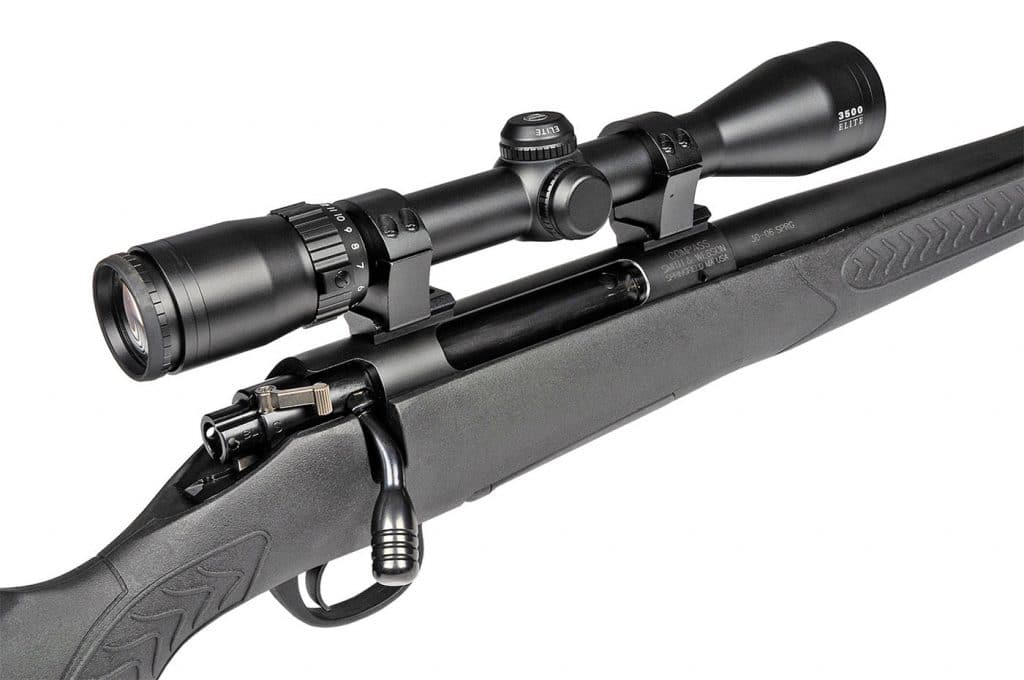I liked the rifle’s detachable, 5-round rotary magazine, a flush-fitting polymer design. It snaps into place with authority and drops freely when the release lever is pushed. One thing that’s always driven me mildly crazy are magazine release levers that protrude from the bottom of a stock. The magazine release lever is protected inside a recess on the bottom of the stock and would be difficult to trigger accidentally.

The Compass has a user-adjustable trigger which Thompson Center says can be set to a pull weights of 3.5 to 5.0 lbs. However, the trigger on our test gun broke at 2 lbs., 13 oz., as measured on a Lyman trigger pull gauge, which I would regard as a welcome deviation from the factory-stated minimum weight. The single-stage trigger had zero creep and broke cleanly with minimal over-travel.
For testing, I mounted a Bushnell Elite 3500 4-12X40mm scope, and ran five different factory loads through the gun to see if it lived up to Thompson Center’s accuracy guarantee of 1-inch groups at 100 yards with premium ammunition.

The rifle proved to be a bit finicky its ammo preferences. Only one of the tested loads, Browning’s new BXR 155-gr. Matrix Tip , met the accuracy guarantee with 0.96-inch average groups and a best group of 0.92 inch. To be fair, all testing was done on a day when the wind varied wildly from 8 to 20 mph. Even so, three tested rounds produced average groups of an inch and a half or better, and four out of five delivered best groups under an inch and a half. With wind taken out of the equation, I suspect groups would tighten up substantially. Of course, hunting often requires you to make shots under less-than-ideal conditions, and by that standard of measurement, the Compass will clearly guide you in the right direction. Contact Thompson/Center Arms, Dept. OT; Tel.: (866) 730-1614; Web: www.tcarms.com




















